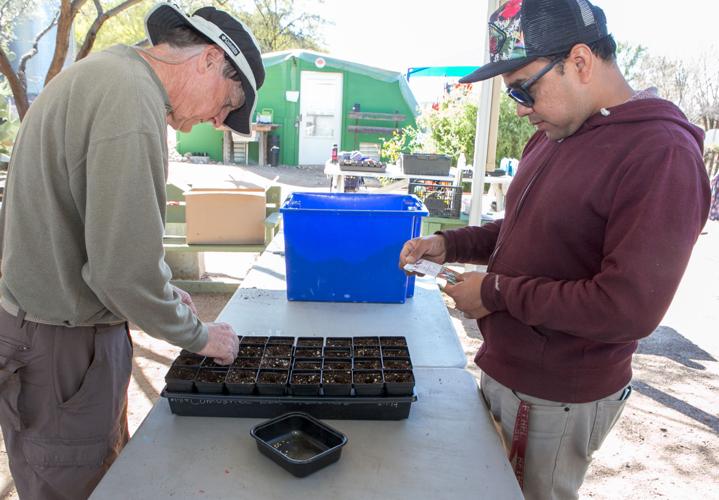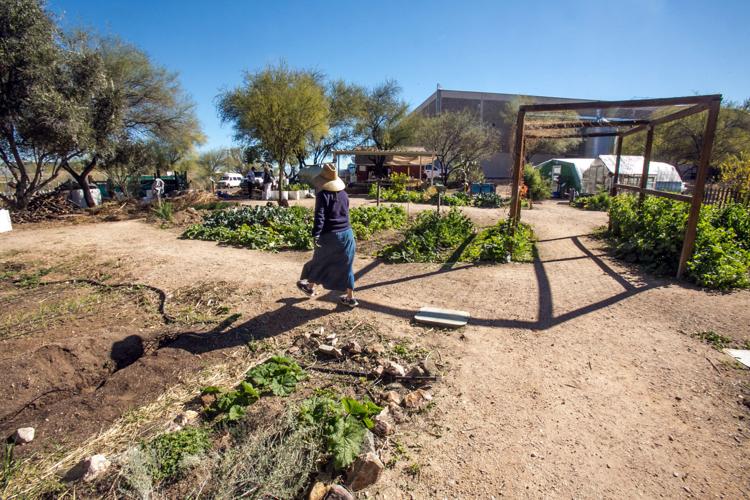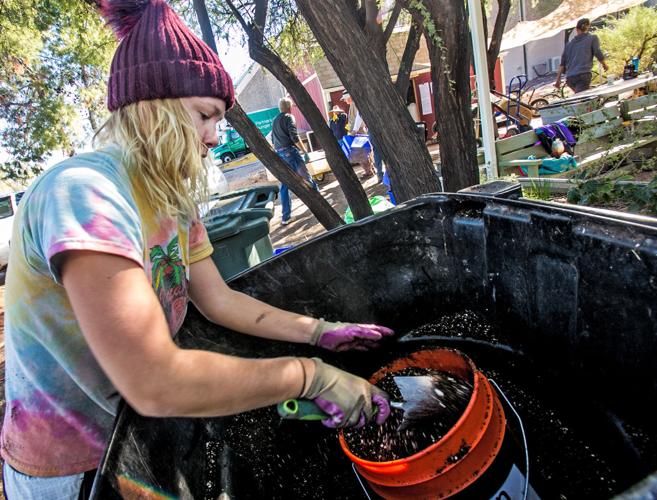If one of your New Year’s resolutions is to grow veggies, now is the time to fulfill that pledge.
Tucson’s spring planting season is getting underway. If you’re brand new to gardening, this is the prime time to get a few tips and start digging.
PLANNING
Don’t be afraid of the coming summer, says Jessica Paul, gardening technician for Community Gardens of Tucson. “Even though we live in a desert, we can have a bountiful garden year round,” she says.
Gardening seasons are different in Southern Arizona compared to other parts of the country, so be careful where you get your advice.
“The information that you read does not apply here in many cases,” cautions Toni Moore, a Pima County master gardener. She recommends attending local classes or using resources specifically addressing Sonoran Desert gardening.
Starting with a small garden is “an easy way to keep things under control,” advises Brandon Merchant, owner of Southwest Victory Gardens. A plot of between 18 and 25 square feet is a good beginning size.
A container garden using 5-gallon tubs also is a good option to keeping a small garden, suggests Luis Herrera, the home garden coordinator for the Community Food Bank of Southern Arizona.
As for location, Merchant suggests putting your garden where running water from rainfall will flow into it.
Watch out for glass windows, advises Jacqueline Soule, author of “Southwest Fruit & Vegetable Gardening” and other gardening books. As the seasonal angle of the sun changes, light may reflect off of windows and into your garden.
“The extra heat and light intensity reflected off windows can make a previously fine crop wither and dry up within a day,” she cautions.
PREPPING
Fix your soil, the experts agree.
“Healthy soil is one of the most important elements in gardening,” says Paul.
“Our soil is desert dirt,” explains Moore. “It’s not sterile, but it doesn’t have a lot of bio-organic matter in it.”
That matter — fungi, bacteria, microbes, insects and other living things — provides nutrients to plants and aerates the soil to hold moisture, she says.
Replace as much as 50 percent of the native soil with compost. Compost is dirt enriched with decayed material such as food scraps, plant trimmings and worm castings.
Optional amendments include ammonium sulphate and soil sulfur, says Moore.
If planting in containers, be sure to use an organic, nutrient-rich potting soil mix, advises Herrera.
If your garden will be in the ground, dig basins, says Soule. That will contain rainwater and flood irrigation so that water seeps deeply into the soil.
PLANTING
There are many spring and summer veggies that are easy to grow both in the ground and in containers.
“Peppers, basil and some varieties of tomatoes can grow well in 5-gallon buckets,” Herrera says.
Other easy crops for beginners include onion, bush bean, Armenian cucumber, melon, corn, tepary bean, eggplant, pole bean, cowpea and squash, especially zucchini and pumpkin.
Moore says tomatoes are “fussy” because of the narrow window for fruiting. Roma and cherry are easiest, she says.
Heat-tolerant varieties such as “Heatwave” or cold-tolerant ones like “Siberian” or “Alaska” can extend the growing season.
Squash may also be challenging for beginners because some plants may need to be pollinated by hand. “Plants that can easily self-pollinate tend to have more chances of being productive,” says Herrera.
After planting, top the soil with a layer of organic material, called mulch.
PROTECTING
Properly watering plants will be crucial as temperatures rise and before monsoon rains kick in.
It doesn’t matter what method you use for irrigation, as long as you’re consistently and correctly watering.
“Water needs to go down 12 to 18 inches and the soil should be kept evenly moist,” she says. Water every day until monsoon rains start.
Good soil and proper watering will take care of many growing problems such as pests or disease. “Plant vigor is your first line of defense,” she says.
Warm weather will mean lots of critters eyeing your plants, says Merchant. Birds, caterpillars, rodents and other animals will munch away in your garden.
Some of this won’t kill your plants, he reassures. “The majority of the time, these things will take care of themselves, but on occasion some intervention from the gardener may be necessary.”
Both Merchant and Herrera suggest you spend time watching your garden grow so you know what’s normal and what needs to be addressed.
Plus, the practice will give you benefits other than fresh food.
“It’s a very calming and therapeutic experience to be around plants and taking care of them,” Herrera says.
Don’t give up if the garden doesn’t do what you expect it to do, Merchant says.
“When I first started gardening, I would stress out if my plants didn’t look perfect or if something didn’t go as planned,” he explains.
“This took a lot of the fun out of gardening and I was always spending money trying to obtain the perfect garden.”
He enjoyed gardening much more after he embraced the process and the challenges.
“In gardening, mistakes are simply learning experiences and there is never one right way to do anything,” he says. “Each season brings new challenges and rewards that will be totally unexpected, so it’s best just to learn from them and move on.”









